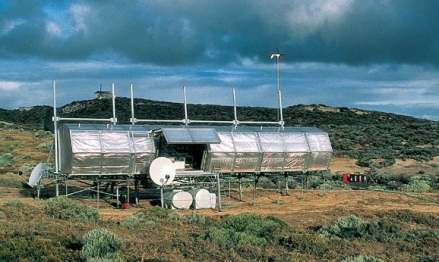Week 9: Space + Art
Prior to this week, I had never heard the term “space culture.” Just as I had with neuroscience, medicine, and robotics, I assumed that space was something purely scientific and objective. And just as with those, I was wrong.
 I have always been aware of the intensity of the Space Race, but I had perpetually analyzed it from a political lense. I assumed all motivations for entering space were for desire to innovate and national pride. I did not realize that the Space Race was also influenced by popular culture and artwork. As astronomer and professor Roger Malina notes, “The space age was possible because for centuries cultural imagination was fed by artists, writers, and musicians who dreamed of human activities in space.”
I have always been aware of the intensity of the Space Race, but I had perpetually analyzed it from a political lense. I assumed all motivations for entering space were for desire to innovate and national pride. I did not realize that the Space Race was also influenced by popular culture and artwork. As astronomer and professor Roger Malina notes, “The space age was possible because for centuries cultural imagination was fed by artists, writers, and musicians who dreamed of human activities in space.”
Space is constantly being portrayed in movies and television. Sitcom The Jetsons aired prior to Neil Armstrong taking his first step on the moon. This reflects the fascination that humans have for space, as well as the government’s response to the public.
 |
| https://i.ytimg.com |
Just as film and television has influenced space, space also has influenced artwork. “Makrolab” in Australia is a huge piece -- it is difficult to discern if it is a sculpture or work of architecture. The article describes it as “...a stranded space station.”
Makrolab is an independent, insulated research unit, much like a station in outer space. It allows artists and scientists to conduct research untethered and without disturbance. It has coupled the advantages of outer space with the advantages of the absence of travel to maximize productivity.
 |
| Makrolab, in Australia |
As I reflect on what is currently being portrayed on TV and in artwork, I wonder how influential it is on the work of the government as well as the private sector today. The popular shows of Stranger Things, and Walking Dead feature parts of life that are not necessarily considered real, such as aliens and zombies. Other shows are also eager to include Area 51. With this in mind, it will be interesting to see if public research and discoveries about these topics will be unveiled sometime in the near future.
Sources:
"Makrolab." V2_Institute for the Unstable Media. N.p., 09 Aug. 2011. Web. 30 May 2017.
"CODED UTOPIA." Continental Drift. N.p., 18 May 2009. Web. 30 May 2017.
Uconlineprogram. "Space pt4." YouTube. YouTube, 30 May 2012. Web. 30 May 2017.
Uconlineprogram. "Space pt6." YouTube. YouTube, 30 May 2012. Web. 30 May 2017.
Leonardo Space Art Project Visioneers. N.p., n.d. Web. 30 May 2017.
I really like how you connected our current television programs to possible scientific finds in the future. I too wrote about how TV influenced scientific ideas, and the artists behind those shows are to some extent responsible for the discoveries we've made. However, I didn't even think to connect it to today's shows! I personally haven't seen it, but Westworld comes to mind in relation to this topic, where some of the robots become sentient.
ReplyDelete